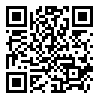BibTeX | RIS | EndNote | Medlars | ProCite | Reference Manager | RefWorks
Send citation to:
URL: http://ehj.ssu.ac.ir/article-1-68-en.html

 , Mohammad Ali Morowatisharifabad
, Mohammad Ali Morowatisharifabad 
 , Fereshteh Zamani-alavijeh
, Fereshteh Zamani-alavijeh 
 , Hossein Fallahzadeh
, Hossein Fallahzadeh 
 , Mohammad Hossein Mosaddegh
, Mohammad Hossein Mosaddegh 

Introduction: The existence of standard tools is one of the basic needs of scientists of healthy behavior for predicting health-related behaviors. The aim of the present study was to design a psychometrically sound instrument to measure the protection motivation theory constructs regarding self-medication for elderly Iranians.
Methods: The study was conducted in spring 2016. The sample consisted of 196 Iranians between the ages of 60 and 74. The study took place in Ahvaz, Iran. The instrument included perceived susceptibility, severity, response costs, response efficacy, self-efficacy, rewards, and fear constructs. The qualitative component of the study, which consisted of interviews with experts and a systematic review of the literature, provided the data to write the items for the instrument, followed by determining the content validity. Principal components analysis with Oblique rotation was performed to extract correlated constructs. The Kaiser-Meyer-Olkin (KMO) and Bartlett's tests were performed to examine the suitability of the data for factor analysis. Cronbach’s coefficient alpha was used to estimate the internal consistency of the scales.
Results: The KMO test statistic of 0.90 revealed the sampling adequacy for doing factor analysis and Bartlett's test of sphericity was significant (p < 0.001). Seven constructs were extracted based on Eigenvalues of ≥ 1.00 and factor loadings of ≥ 0.40. Cronbach’s α for the constructs, namely, perceived susceptibility, severity, response costs, response efficacy, self-efficacy, rewards and fear were 0.84, 0.86, 0.81, 0.82, 0.88, 0.89, and 0.85, respectively. The seven constructs accounted for 69.41% of the variation.
Conclusion: The developed scales for measuring the protection motivation theory constructs regarding self-medication have acceptable psychometric properties among elderly Iranians.
Received: 2016/08/6 | Accepted: 2016/10/13 | Published: 2016/12/25
| Rights and permissions | |
 |
This work is licensed under a Creative Commons Attribution-NonCommercial 4.0 International License. |




